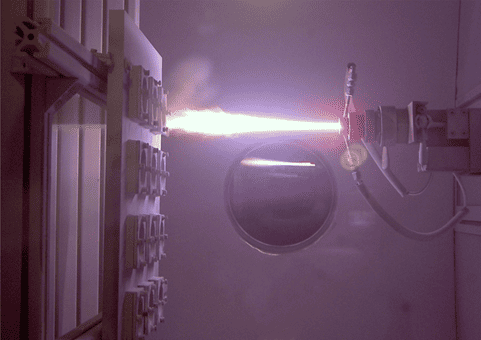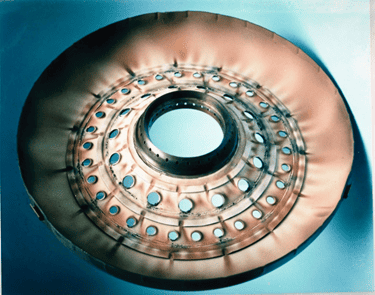A plasma is a liquid that has been heated to such a high temperature that it has ionized. This effectively results in it becoming electrically conductive. Thermal plasma spraying involves spraying a stream of plasma particles at high velocity towards a substrate. The substrate in question will have been prepared by a blasting process that has made it become coarse. Upon coming into contact with the prepared substrate, the superheated plasma particles begin to cool down, eventually mechanically bonding to the metal substrate. This ultimately leads to the formation of a densely packed layer of particles.

If you’re looking for more a more technical account of the finer details of the chemistry underlying the thermal plasma spraying process, the University of Cambridge’s website contains detailed information about this area.
How is Thermal Plasma Spraying Carried Out?
First, a plasma spray gun generates a flame. Plasma is then fed into the spray gun, then plasma gas is generated. A powder coating is next fed through the powder supply, and the plasma exits an anode nozzle and begins interacting with the powder. An extremely hot flame is then generated, which can then be used to coat the desired metal parts.
Why is Thermal Plasma Spraying Useful?
Thermal plasma spraying is a useful technique for a variety of industries. Treating a surface with thermal plasma spray could help to reduce surface abrasiveness, creating smoother yet harder surfaces. It’s also used by businesses to salvage pieces of machinery that have become worn out, helping them to recuperate old machines. This reduces waste and also reduces business costs. Making use of thermal plasma spray techniques will benefit the environment as well as helping you to invest your capital more effectively.

Further benefits of the thermal plasma spraying technique include giving materials protection from corrosion, including making them resistant to oxidation and more resistant to extreme temperatures (hot and cold). The thermal plasma coating technique also has the benefit of improving the electrical conductivity and resistivity of a wide range of materials.
If you’re looking for more information about thermal plasma spraying, sites such as https://www.poeton.co.uk/standard-treatments/plasma-coatings/ can offer you more information about plasma coating treatments and why they could be useful for your business.
Which Materials is it Used for?
Thermal plasma spraying offers a broad range of coating materials. As plasma spraying is a true welding method, it can be used on alloys of cobalt, iron and nickel. Thermal plasma spraying makes use of a flame that can reach incredibly high temperatures of up to 27,000 degrees Fahrenheit, meaning that it’s also useful for treating a wide range of metals with higher melting points, including alumina, tungsten carbide and stellite. If you’re working with substances that need to be protected from particularly high temperatures, zirconia is an excellent choice, whereas chrome oxide ceramic is used when materials need protecting from wear resistance.
The above are just some of the many reasons why thermal plasma spraying is used by engineers worldwide.
